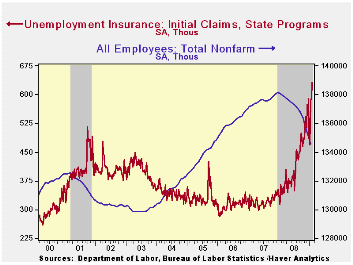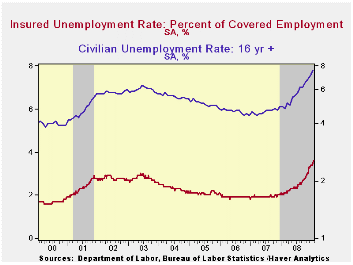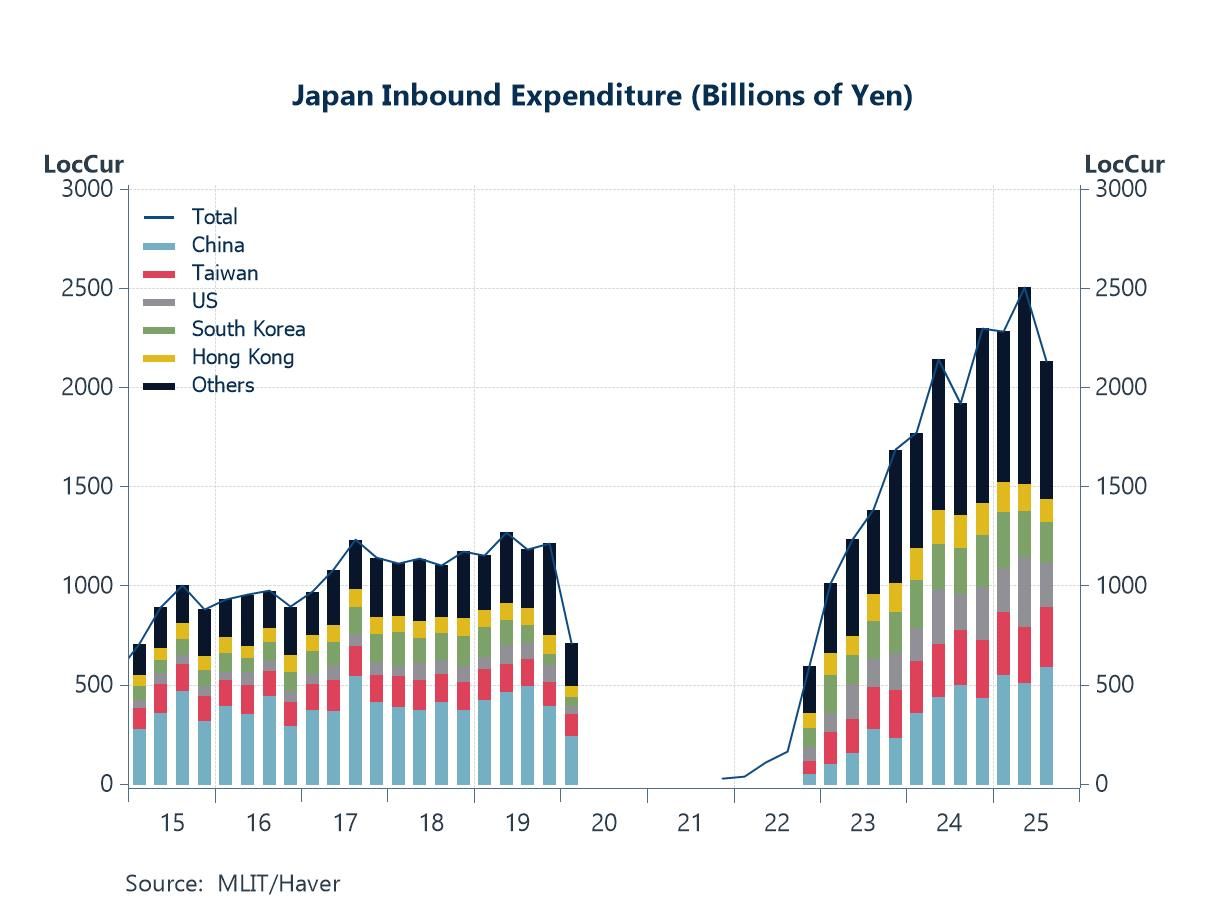 Global| Feb 12 2009
Global| Feb 12 2009U.S. Initial Claims For Unemployment Insurance Slipped From Recent High
by:Tom Moeller
|in:Economy in Brief
Summary
U.S. labor market conditions continued dismal as the Labor Department indicated that initial claims for unemployment insurance slipped just 8,000 to 623,000 after an upwardly revised 40,000 increase during the prior week. The latest [...]

U.S. labor market conditions continued dismal as the Labor Department indicated that initial claims for unemployment insurance slipped just 8,000 to 623,000 after an upwardly revised 40,000 increase during the prior week. The latest level again surpassed Consensus expectations for 610,000 initial claims. Initial claims continue to be the highest since late during the sharp recession of 1981-82. During that recession, real GDP fell by 2.9% peak-to-trough.
The Labor Department indicated that the largest increases in initial claims for the week ending January 31 were in California (+20,001), North Carolina (+8,663), Ohio (+4,738), Georgia (+4,392), and Kansas (+3,232), while the largest decreases were in Virginia (-1,937), New Jersey (-1,551), Missouri (-1,370), Oklahoma (-1,199), and Connecticut (-1,000).
Labor market stress was further indicated by an increase to 4,810,000 continuing claims for unemployment insurance. The latest was another record. The series dates back to 1966. The four-week average of continuing claims rose 73,800 to 4,745,250. Continuing claims provide some indication of workers' ability to find employment and they lag the initial claims figures by one week.
Though the latest level of continuing claims was a record, the labor force has grown as well. Therefore, the insured rate of unemployment was not at a new high. It remained stable at 3.6% which was, however, the highest since 1983. The highest insured unemployment rates in the week ending January 24 were Michigan (7.4 percent), Oregon (6.9), Idaho (6.8), Wisconsin (6.1), Pennsylvania (5.9), Nevada (5.7), Montana (5.6), Indiana (5.5), Alaska (5.4), New Jersey (5.4), and Rhode Island (5.4).
| Unemployment Insurance (000s) | 02/06/09 | 01/31/09 | 01/17/09 | Y/Y | 2008 | 2007 | 2006 |
|---|---|---|---|---|---|---|---|
| Initial Claims | 623 | 631 | 591 | 83.8% | 420 | 321 | 313 |
| Continuing Claims | -- | 4,810 | 4,799 | 78.5% | 3,342 | 2,552 | 2,459 |
Tom Moeller
AuthorMore in Author Profile »Prior to joining Haver Analytics in 2000, Mr. Moeller worked as the Economist at Chancellor Capital Management from 1985 to 1999. There, he developed comprehensive economic forecasts and interpreted economic data for equity and fixed income portfolio managers. Also at Chancellor, Mr. Moeller worked as an equity analyst and was responsible for researching and rating companies in the economically sensitive automobile and housing industries for investment in Chancellor’s equity portfolio. Prior to joining Chancellor, Mr. Moeller was an Economist at Citibank from 1979 to 1984. He also analyzed pricing behavior in the metals industry for the Council on Wage and Price Stability in Washington, D.C. In 1999, Mr. Moeller received the award for most accurate forecast from the Forecasters' Club of New York. From 1990 to 1992 he was President of the New York Association for Business Economists. Mr. Moeller earned an M.B.A. in Finance from Fordham University, where he graduated in 1987. He holds a Bachelor of Arts in Economics from George Washington University.






